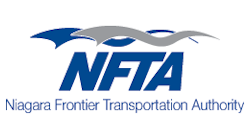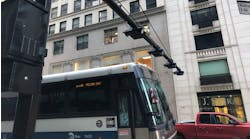Research from the Accessibility Observatory at the University of Minnesota recently ranked the top metropolitan areas in the country for connecting workers with jobs by transportation authorities. The annual rankings are determined by a weighted average of accessibility, giving a higher weight to closer, easier-to-access jobs.
"This project provides the most detailed evaluation to date of access to jobs by transit," said Andrew Owen, director of the Observatory." We directly compare the transit accessibility performance of America's largest metropolitan areas. We are impressed with the public transportation systems that saw improvements from the previous year."
Niagara Frontier Transportation Authority’s rank rose from 29 in 2015 to 22 in 2016, which indicates a commitment to improving job accessibility.
Jobs reachable within 10 minutes are weighted most heavily; jobs were given decreasing weight as travel time increases up to 60 minutes. Travel times were calculated using detailed pedestrian networks and full transit schedules for the 7:00 a.m. to 9:00 a.m. period. The calculations include all components of a transit journey, including “last mile” access and egress walking segments and transfers, and account for minute-by-minute variations in service frequency.
“The results of this independent study are a testament to the hard-working employees here at NFTA who work diligently to get Western New Yorkers to their jobs every day,” said Kimberley Minkel, NFTA’s executive director.
Buffalo ranked higher than larger cities like Atlanta, Detroit, and Cleveland. The top city was New York, followed by San Francisco, and Chicago.
“We are proud of our efforts to improve and link our riders to where they need to go,” said Tom George, NFTA/Metro’s director of public transit. “I am thrilled to see our ranking of 22nd, for a city of our size, demonstrate these vast improvements within our system.”
The research was sponsored by the National Accessibility Evaluation Pooled-Fund Study, a multi-year effort led by the Minnesota Department of Transportation and supported by partners including the Federal Highway Administration and 10 state DOTs.
The Accessibility Observatory at the University of Minnesota is the nation’s leading resource for the research and application of accessibility-based transportation system evaluation. The Observatory is a program of the Center for Transportation Studies and the Department of Civil, Environmental, and Geo-Engineering. CTS is nationally renowned for developing, fostering, and spreading innovation in transportation.



